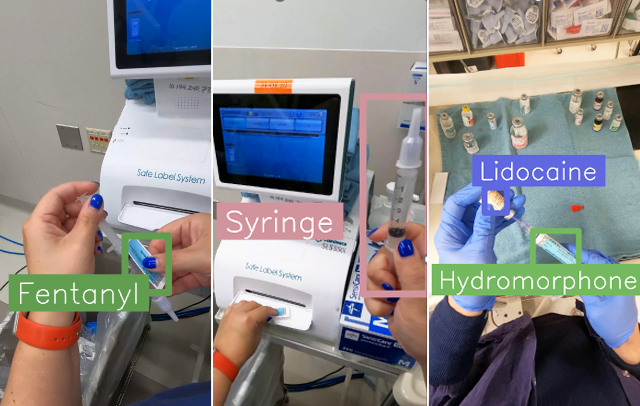Researchers at the University of Washington have developed a wearable camera system that uses artificial intelligence to help prevent medication errors in clinical settings. The technology was found to have 99.6% sensitivity and 98.8% specificity at identifying vial mix-ups, providing an extra layer of safety for patients. This is particularly important as research shows that drug administration errors are a common occurrence in healthcare settings, impacting millions of patients annually and costing billions of dollars.
The system works by using GoPro cameras to collect videos of medical providers in operating rooms, where they perform drug draws. The footage is analyzed to identify the content of vials and syringes, training the AI model to recognize different medications. Although challenging due to the limited view of the objects in the video, the system is able to identify vials and syringes based on size, shape, cap color, and label print size, rather than reading the labels.
The ultimate goal of the technology is to commercialize it and deploy it on a larger scale, but further testing is needed before that can happen. Future steps involve training the system to detect more subtle errors, such as drawing the wrong volume of medication, and potentially integrating it with devices like Meta smart glasses for enhanced functionality. The researchers published their study in npj Digital Medicine, with contributions from Carnegie Mellon University, Makerere University, and the Toyota Research Institute.
Medical providers working in high-stress environments such as operating rooms, emergency rooms, and intensive care units are prone to making medication errors, which can have serious consequences for patients. With the development of this wearable camera system, AI technology is being used to enhance patient safety by double-checking medications and alerting providers to potential errors before they occur. The system’s high sensitivity and specificity make it a promising tool for reducing the frequency of drug administration mistakes.
The technology has the potential to significantly impact healthcare outcomes by reducing the number of preventable errors that occur during the administration of medications. With an estimated 5% to 10% of all drugs given in healthcare settings associated with errors, the need for solutions like this wearable camera system is critical. By using AI to detect and prevent medication errors in real-time, medical providers can feel more confident in their ability to deliver safe and effective care to their patients.
The development of this technology represents a significant advancement in patient safety initiatives within the healthcare industry. By leveraging AI technology to provide an additional layer of oversight and error prevention, the wearable camera system has the potential to revolutionize the way medications are administered in clinical settings. As further testing and refinement are conducted, it is likely that this innovative approach will become an essential tool for improving medication safety and overall quality of care for patients across a wide range of healthcare settings.












